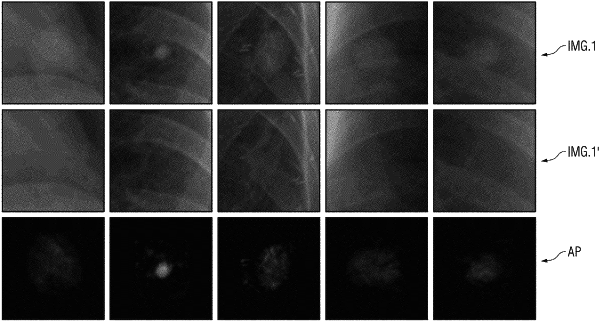| CPC G16H 50/20 (2018.01) [G06T 7/11 (2017.01); G06T 7/337 (2017.01); G16H 30/40 (2018.01); G06T 2207/10081 (2013.01); G06T 2207/10088 (2013.01); G06T 2207/10104 (2013.01); G06T 2207/10108 (2013.01); G06T 2207/10116 (2013.01); G06T 2207/10132 (2013.01); G06T 2207/20028 (2013.01); G06T 2207/20081 (2013.01); G06T 2207/20084 (2013.01); G06T 2207/30064 (2013.01)] | 26 Claims |

|
1. A computer-implemented method, comprising:
receiving a first medical image, the first medical image displaying an abnormal structure within a patient;
applying a trained inpainting function to the first medical image, to generate a modified first medical image, the trained inpainting function being trained to inpaint abnormal structures within a medical image;
determining an abnormality patch based on the first medical image and the modified first medical image;
receiving a second medical image, the second medical image being of a same type as the first medical image; and
generating a modified second medical image by including the abnormality patch in the second medical image.
|